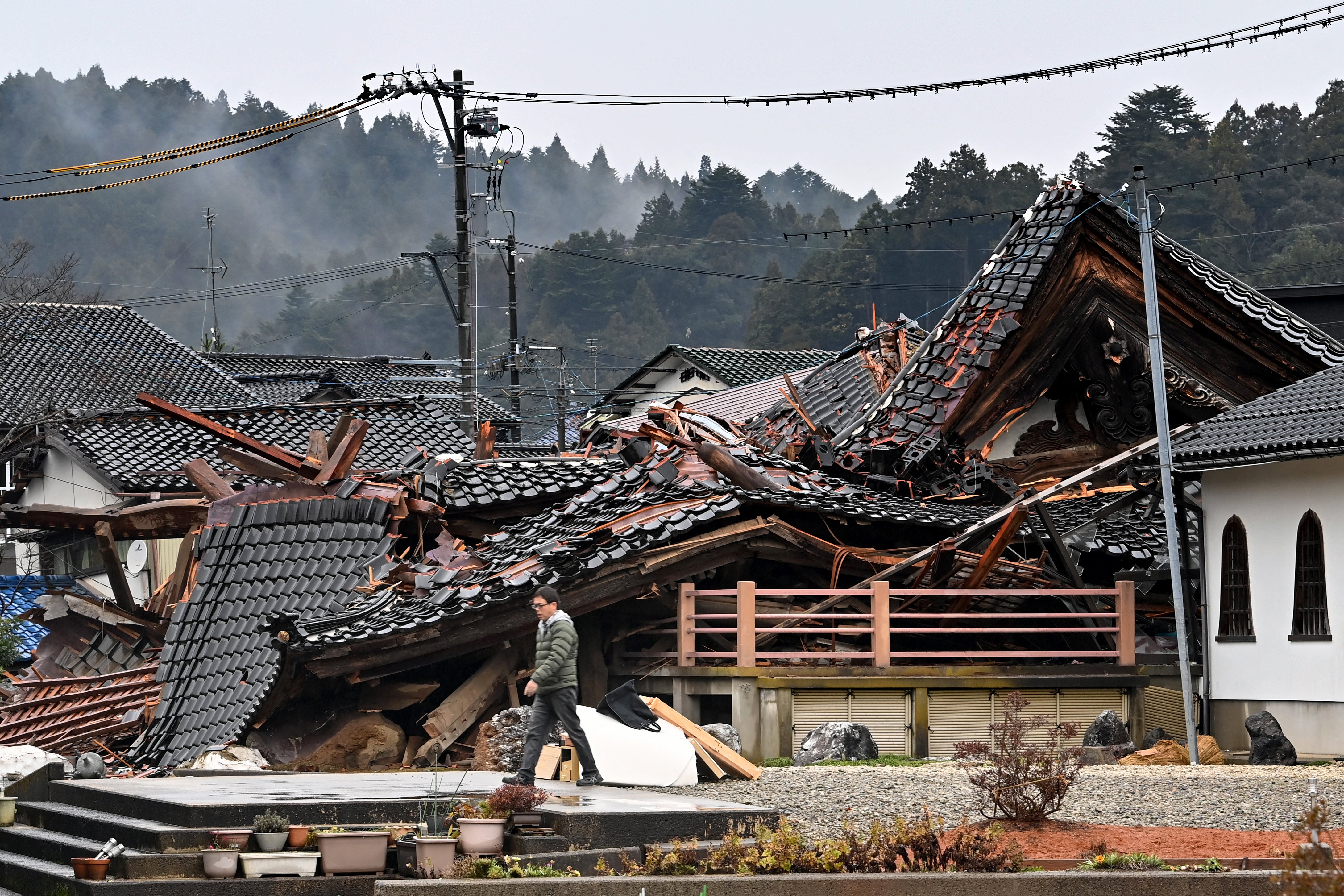Woman in her eighties rescued from collapsed home 72 hours after Japan earthquake
The death toll related to the earthquake has reached at least 84
Your support helps us to tell the story
This election is still a dead heat, according to most polls. In a fight with such wafer-thin margins, we need reporters on the ground talking to the people Trump and Harris are courting. Your support allows us to keep sending journalists to the story.
The Independent is trusted by 27 million Americans from across the entire political spectrum every month. Unlike many other quality news outlets, we choose not to lock you out of our reporting and analysis with paywalls. But quality journalism must still be paid for.
Help us keep bring these critical stories to light. Your support makes all the difference.
A woman in her eighties has been pulled from her collapsed home 72 hours after a 7.6 magnitude earthquake wreaked havoc on Japan.
The first three days of rescue operations are crucial, with survival rates dropping significantly after that point. The woman was said to have been trapped inside her two-storey home in the city of Wajima – one of the areas hardest hit by the tremor – when she was rescued by firefighters. The woman was conscious and responsive and was sent to a local hospital.
The earthquake, which struck on New Year’s Day and was followed by dozens of aftershocks, led to the collapse of buildings across Ishikawa Prefecture and nearby regions on the western coastline of Japan. So far 156 people have been rescued, but at least 179 others remain unaccounted for, according to authorities. Many of them are elderly and from Wajima and another city, Suzu.
“We must continue putting all of our efforts into rescuing people, even beyond 72 hours after the disaster,” Japanese prime minister Fumio Kishida said at a news conference.
The death toll reached at least 84 people on Thursday. Officials said 48 of those who died were in the city of Wajima and 23 were in Suzu. The 13 others were reported in five neighbouring towns. More than 300 people have been injured, at least 26 seriously.

The extent of the damage from the earthquake and the tsunami it triggered remains unclear, with rescuers struggling to reach the northernmost areas of the peninsula – where much of the fatalities are – due to severed roads. Three days after disaster struck, 30 villages remain inaccessible, according to Ishikawa prefecture authorities.
Aid is trickling in but evacuees remain largely cut off from food, water, electricity, and communications amid freezing temperatures and bouts of heavy rain, authorities have also said.
The 3,000 meals and 5,000 bottles of water that were delivered as of Wednesday are not nearly enough for the 11,000 evacuees in Wajima, its mayor, Shigeru Sakaguchi, said at a regional disaster response meeting.
“First and foremost, it’s the road – severed roads are hampering not just aid supplies, but also the recovery of electricity, water, mobile signals and other lifeline infrastructures,” he said.
“Compared to other disasters the road situation into Wajima is very bad. I feel it’s taking longer than usual for assistance to arrive,” Shunsaku Kohriki, a medical worker who has assisted other disasters, told Reuters in the city. “I think realistically speaking the evacuees will have to live in really tough conditions for a while yet,” he said.
The first day of trading on the Tokyo Stock Exchange, usually a celebratory affair with the ringing of a big bell and throngs of kimono-clad women, was marked with a moment of silence, as people bowed their heads, to mourn the dead.
“I would like to express my heartfelt prayers for the souls of those who lost their lives, and my deepest sympathies to all those suffering from the disaster,” Japan’s finance minister, Shunichi Suzuki, said.
Reuters contributed to this report

Join our commenting forum
Join thought-provoking conversations, follow other Independent readers and see their replies
Comments